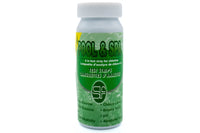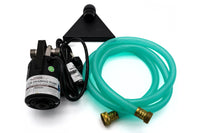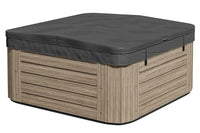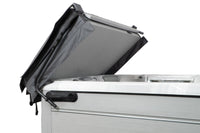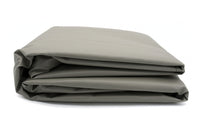Hot tubs are supposed to help you relax and leave you feeling like you haven’t a care in the world. So why does thinking about water maintenance give you high school chemistry class flashbacks? Hot Tub Chemistry really doesn’t have to be difficult to keep the water in your hot tub clean, though. By being aware of just a handful of things, it’s easy to keep your hot tub looking (and smelling) more like the coast near Bali and less like the diving pool at the Rio Olympics.

Testing and Adjusting
There are really only 4 things you need to worry about when it comes to keeping your hot tub clean:
- Alkalinity – between 80 – 120
- PH levels – between 7.2 and 7.8
- Sanitizer levels – Chlorine 1.5 – 3.0 and Bromine 3.0 – 5.0
- How much organic material is in the water
All four of these things are connected. Organic material in the water feeds bacteria (smell) and algae (cloudy, green water). Sanitizer slows down the growth of the gooey stuff. PH levels affect how well the sanitizer works, and alkalinity determines how stable the PH levels are.
To keep these elements under control, you’ll need 5 things: testing strips, alkalinity adjuster, PH adjuster, sanitizer and shock chemicals.
The Cover Guy carries a variety of testing strips, including multi-function ones that let you check everything with one dip.
Once you’ve dipped your strip:
- Compare the color of the strip with the color swatches on the packaging
- Check alkalinity first, then PH, then sanitizer levels
- If any of those things is not where it should be, add the appropriate chemical to adjust it
- If more than one thing needs adjusting, adjust them one at a time.
- Add the first chemical and wait several hours, or overnight
- Test again and add the next chemical if still necessary
- Repeat if needed
That’s pretty much all there is to it. The only other wrinkles are choosing what type of sanitizer to use, and knowing how often to shock the hot tub.
Sanitizers
The two most common types of sanitizers are bromine and chlorine. They both do the same thing – inhibit the growth of bacteria and algae – in much the same way. The biggest difference is in application. Bromine is a bit more expensive, and a bit more complicated to administer, but the treatments last longer and require less chemical in the water than chlorine. Chlorine, on the other hand, is easier to use and a bit less expensive, but requires more chemical in the water. Some people find they are sensitive to one or the other and experience skin or eye irritation, so don’t be afraid to try switching to the other if the water bothers you shortly after a treatment. Remember to remove your hot tub cover for at least an hour after shocking your tub.

Shocking
No matter what sanitizer you use or how carefully you check and adjust, biological matter will build up in the hot tub with use. A shock treatment takes care of this problem by oxidizing the organics in the water before they can feed the bacteria. It also helps get rid of sanitizer residue that remains after the sanitizer has done its job.
Generally it is recommended that you shock your hot tub once a week – more often if it’s seeing heavy use. If your levels are all good, but the water is a bit cloudy or doesn’t quite smell right, it’s time for a shock. You should also shock the tub if you haven’t used it for an extended period of time.

So there you go easy Hot Tub Chemistry: dip, check, adjust, and shock. Do that regularly and it will be clear soaking and happy tubbing.

